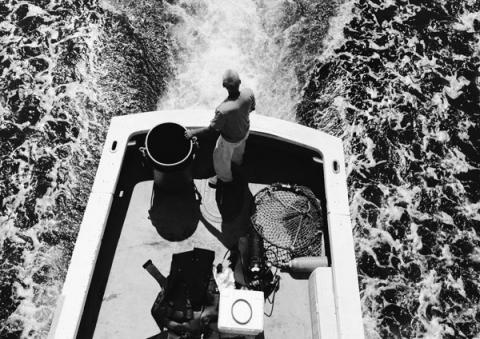
A mile or so off the coast of Point Loma, six-foot swells rock the Erin B. The old 35-foot boat pitches and yaws like a bull ride in a saloon while Peter Halmay sprinkles baby powder on his extremities. He tugs himself into a faded wetsuit that has suffered lacerations and been hand-sutured many times over the years. Another day at the office:
Halmay is preparing to dive 40 feet or more into dark, cold water and spend the next five hours on the bottom harvesting red sea urchins, a prickly softball-sized treasure considered by many to be the best-tasting of them all.

Within a matter of hours, diners here and around the globe will pay a premium to consume the day’s catch. Served iced and live on the half shell with a dash of lavender sea salt and lemon at South Park’s Sea Rocket Bistro, dropped into a luminous shooter at PB’s Sushi Ota, balanced on a scoop of green tea ice cream at Kaito Sushi in Encinitas, or eaten right out of the shell on the deck of a heaving fishing craft, the flavor of fresh urchin, also known as uni, is an unexpected, primordial salty sweetness.
“It’s like taking a bite of clean ocean,” says Slow Food San Diego president chef Gordon Smith. “Sexy, clean ocean.” When Smith owned the Basil Street Café, he folded fresh uni into his linguini.
First-time urchin eaters may require a suspension of disbelief. What foodies claim as roe is not. It is in fact gonad. A sea urchin is all gonad and no brain, a circumstance that possibly has contributed to the notion among Asian cultures of uni as an aphrodisiac. Science has been hot on the uni trail for decades. Sea urchins were sent on a Space Shuttle mission once to measure, of all things, the speed at which their sperm could swim in zero gravity. Years later, Texas researchers chose to sequence the sea urchin genome. Their conclusion was unsettling. Somewhere along the evolutionary chain, they claim, urchins and humans shared a common ancestor.
Halmay, 71, the recipient of triple bypass surgery three years ago, spits into his dive mask. He dives at least four days out of every week. “We don’t take breaks. We go out 52 weeks a year. Good weather or bad.” His first mate straps him into a buoyancy vest, then fastens an air tank onto the back and checks air flow through the regulator. Next comes a weight belt threaded with chunks of lead the size of apples.
“You have to have a high threshold of misery,” Halmay grins through the mask, “to be a good uni diver.”
Read more
